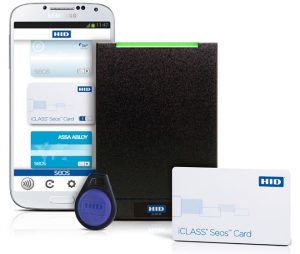How do they work?
Proximity readers operate by analysing the unique electronic information stored on a proximity keyfob or swipe card presented to it, and then transmits this information to the control equipment which compares it with information stored in the access system. If the information matches an authorised user, the control equipment will then signal the associated electronic door lock to “unlock” allowing the user access.
Proximity readers are the most commonly used method of controlling access to and from buildings and areas within buildings. Proximity keyfobs/ swipe cards are normally uniquely programmed for each authorised user. Permissions are granted for each user in line with the client’s security protocols. Such permissions can be set to control access by area, time and date.
The access control equipment records on an electronic log each time a keyfob/ swipe card is presented to a proximity reader that is part of the access system. This information is accessible to the client using the management software. Useful management reports can be generated to find out who entered and exited areas/buildings, and at what time and date.
Proximity readers can be used as standalone system or part of an integrated building management system. Prox cards/ swipe cards have the added benefit over keyfobs of being able to print photos and other user information on them, enabling the cards to become ID cards as well as a device to legitimately access the client’s building and areas within their building.
For expert advice on all your Access Control needs, why not call us now to arrange for one of our friendly Security Consultants to help design a new Access Control solution customised to suit your home or business.

